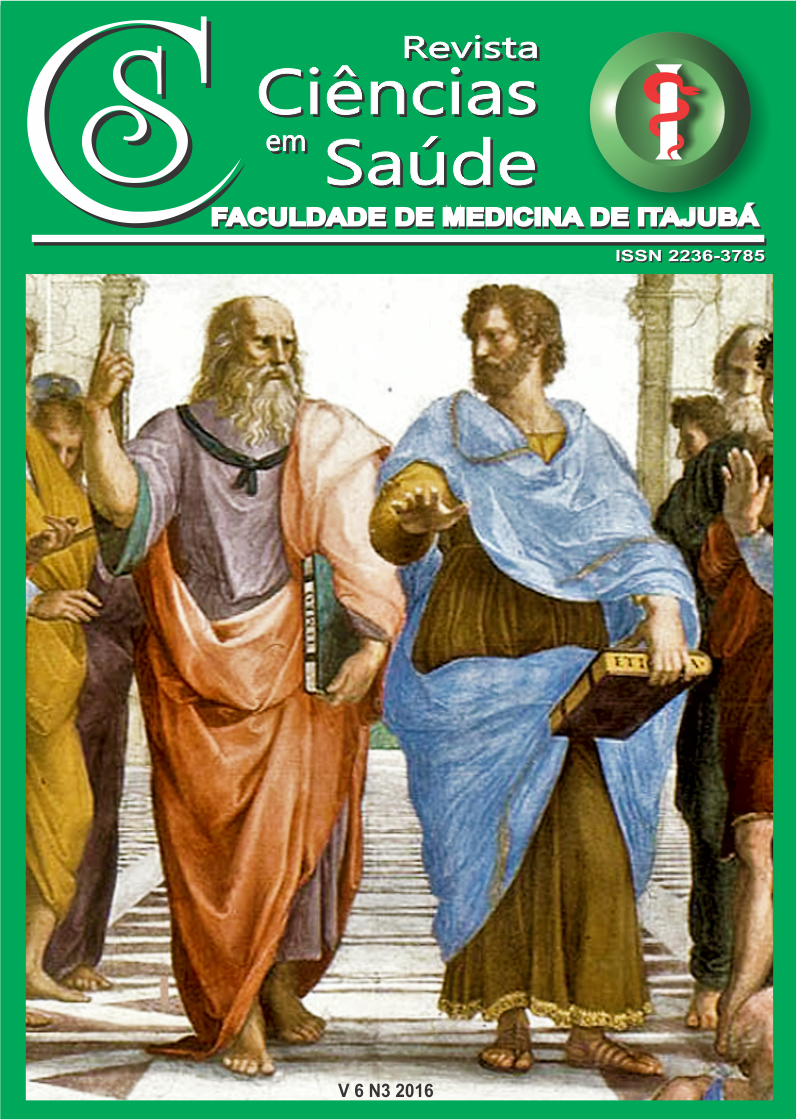Estudo da Contaminação Microbiana no Preparo de Fórmulas Lácteas Infantis em Lactário de um Hospital Universitário do Sul de Minas Gerais / Study of Microbial Contamination in Milk Formula Preparation for Children in a Lactary of a University Hospital in Southern of Minas Gerais State
Main Article Content
Abstract
Objetivo: Avaliar condições microbiológicas do preparo de fórmulas lácteas infantis no lactário do Hospital Escola de Itajubá. Materiais e Métodos: Foram realizadas contagens de microrganismos mesófilos viáveis, bolores e leveduras, Staphylococcus aureus, Bacillus cereus, coliformes totais e de origem fecal e Escherichia coli. Resultados: Todas as amostras de fórmulas lácteas se encontraram aptas para o consumo humano. O crescimento de microrganismos foi superior ao esperado em algumas amostras da colher e do copo do liquidificador utilizados para o preparo das fórmulas. Houve a presença de mesófilos ao primeiro dia, o que indica condições insatisfatórias na produção das fórmulas, como armazenamento e temperatura; não houve presença de coliformes fecais, o que indica boa prática de higiene quanto a manipulação das mesmas, e de acordo com a literatura, esses podem ser considerados os piores indicadores de condições higiênico-sanitárias no manuseio de alimentos. O crescimento nos utensílios revela falha na higienização dos mesmos, oferecendo riscos aos usuários dos serviços do lactário. Os resultados mostram que a boa prática de medidas higiênico-sanitárias promove qualidade das fórmulas. Conclusão: O uso de utensílios plásticos aumenta o risco de contaminações e poderia ser substituído por objetos metálicos, garantindo melhor qualidade dos produtos.
Palavras-chave: Lactário, Fórmulas Infantis, Microrganismos, Segurança Alimentar
ABSTRACT
Objective: To evaluate microbiological preparation of infant milk formulas in lactary of Hospital Escola de Itajubá. Material and Methods: We performed viable mesophilic counts, molds and yeast, Staphylococcus aureus, Bacillus cereus, total coliforms of fecal origin and Escherichia coli. Results: All samples of infant formula are fit for human consumption in accordance with current legal resolution. It occurred growth of microorganisms higher than expected in some samples from the spoon and from the blender cup used for the preparation. Presence of mesophilic on the first day indicates unsatisfactory conditions in the production of the formulas, like storage and temperature; the analyses of fecal coliforms indicates good hygiene practice in the production and according to the literature, it can be considered the worst indicators of sanitary conditions in food handling. Growth in utensils also reveals failure to sanitize this objects, which offers risk to the users of lactary services. The results are in agreement with the literature, and show that the good practice of hygiene and sanitary measures promote quality in formulas. Conclusion: It can be concluded that the use of plastic utensils increases the risk of contamination and should be replaced by metal objects in order to ensure highest quality products.
Keywords: Lactary, Infant Formulas, Microrganisms, Food Safety
Article Details
Authors maintain copyright and grant the HSJ the right to first publication. From 2024, the publications wiil be licensed under Attribution 4.0 International 
 , allowing their sharing, recognizing the authorship and initial publication in this journal.
, allowing their sharing, recognizing the authorship and initial publication in this journal.
Authors are authorized to assume additional contracts separately for the non-exclusive distribution of the version of the work published in this journal (e.g., publishing in an institutional repository or as a book chapter), with acknowledgment of authorship and initial publication in this journal.
Authors are encouraged to publish and distribute their work online (e.g., in institutional repositories or on their personal page) at any point after the editorial process.
Also, the AUTHOR is informed and consents that the HSJ can incorporate his article into existing or future scientific databases and indexers, under the conditions defined by the latter at all times, which will involve, at least, the possibility that the holders of these databases can perform the following actions on the article.

